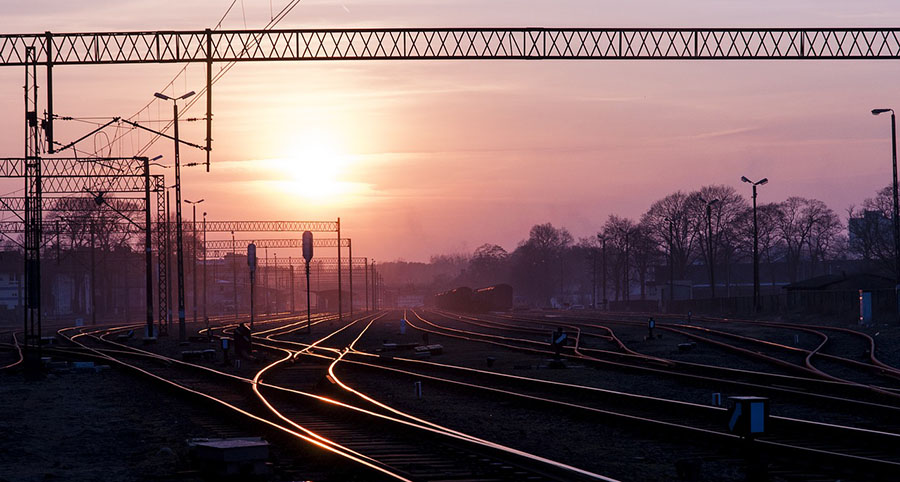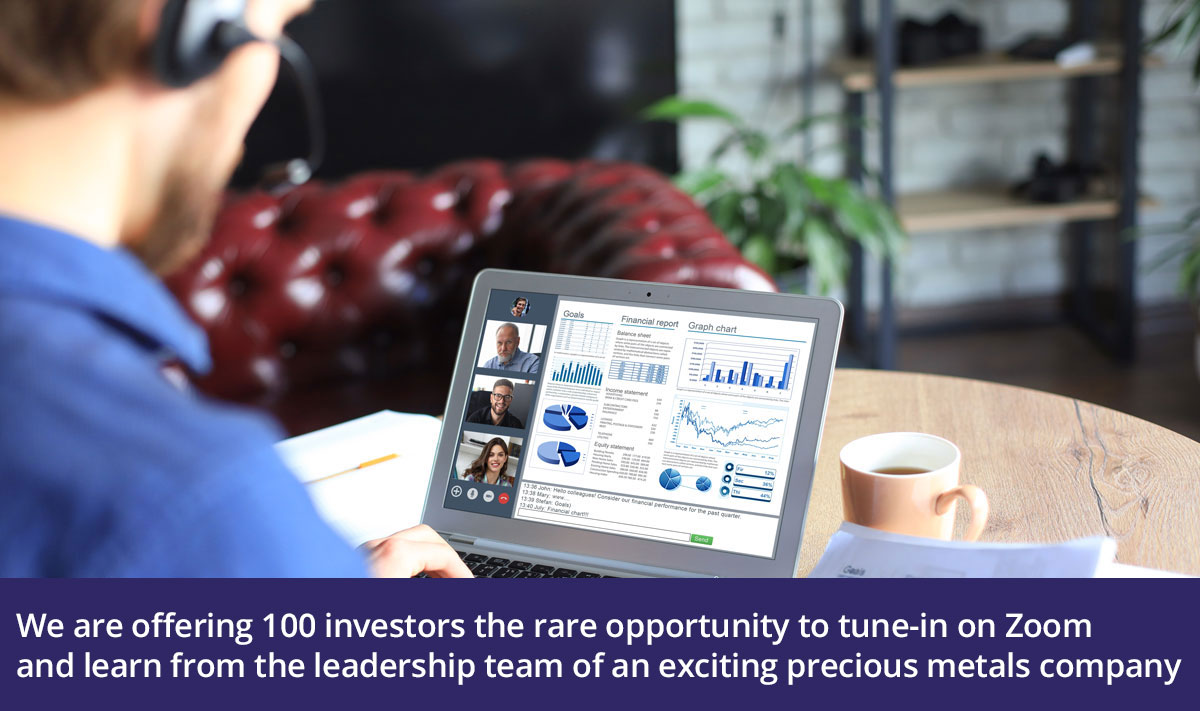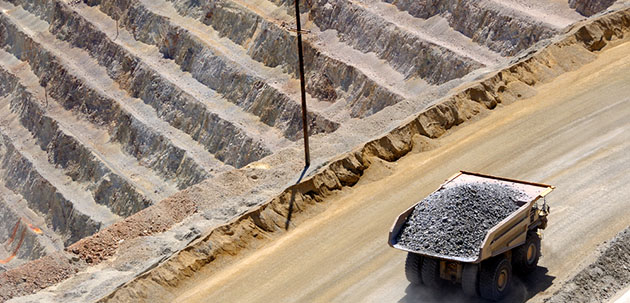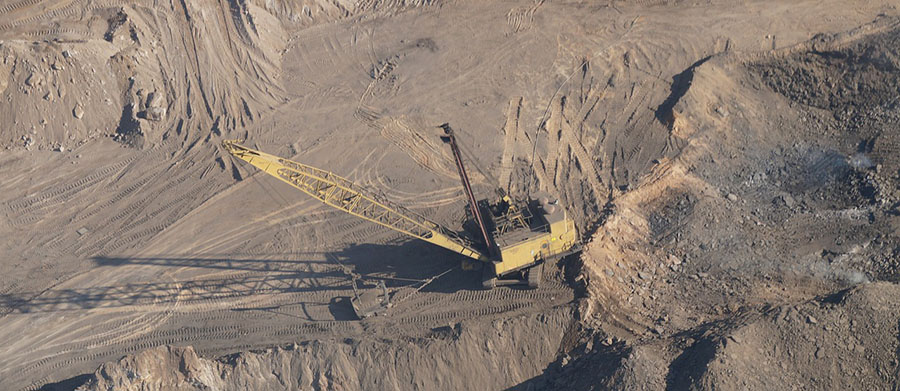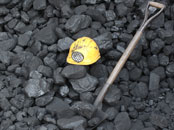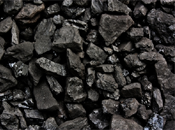TICKERS: ARCH, CNX, ICO, OTCMKTS, BTU, , WTN
Shneur Gershuni: Coal Stocks Fired Up
Interview
Source: George Mack of The Energy Report (3/22/11)
 The earthquake, tsunami and resulting problems at the Fukushima nuclear power plant in Japan could impact some coal plays as global demand shifts to fossil fuel. In this exclusive interview with The Energy Report, UBS Securities Analyst Shneur Gershuni argues a bullish case for coal demand and shares some select coal stocks poised to benefit significantly.
The earthquake, tsunami and resulting problems at the Fukushima nuclear power plant in Japan could impact some coal plays as global demand shifts to fossil fuel. In this exclusive interview with The Energy Report, UBS Securities Analyst Shneur Gershuni argues a bullish case for coal demand and shares some select coal stocks poised to benefit significantly.
The Energy Report: How has the tragedy in Japan at the Fukushima nuclear power plant impacted the outlook for coal globally?
Shneur Gershuni: There are actually two different types of coal. One we refer to as "thermal," or steam coal, which is used in a boiler to generate heat. It creates steam to hit the turbine space, and that's how you create your power. The other type of coal is called "metallurgical," or met coal. Some people incorrectly refer to it as coking coal. This coal is mixed with iron ore, and you put it into a blast furnace to create the pig iron for the steel-making process. So, when you think about where and how you want to be positioned, it's the steel fundamentals that will drive metallurgical coal demand, and energy needs will drive thermal coal demand.
Given the challenges with the Japanese nuclear facilities, we expect fossil-fuel generation will be used to partially offset the near-term generation losses related to the nuclear fleet to the tune of 5–10 million tons (Mt.). We wouldn't be surprised to see unscheduled shutdowns of nuclear facilities around the globe as regulatory bodies seek to review nuclear safety procedures in the wake of the Japanese crisis. The incremental demand will add more pressure to the global supply/demand balance for thermal coal, which has been tightening of late (as evidenced by the recent move in API 2—delivered price into Europe, which has surged in the last six months and will likely move higher on increased Japanese demand.
TER: Is that on top of the 10 billion short tons of global consumption by 2030 forecast by U.S. Energy Information Administration (EIA)? Even that would be a 48% increase over 2006's reported 6.7 billion short tons of coal.
SG: Yes. Incremental demand will add pressure to the global supply/demand balance that has been tightening of late anyway based on the international delivered price into Europe API. API surged in the last couple of months and will likely increase more in the next few months due to events in Japan.
TER: Tell me a bit about the growth drivers in both the thermal and metallurgical markets.
SG: Sure. Thermal coal is used primarily for power generation. In the United States right now, things are changing due to the way commodity prices are moving with the fuel switch to natural gas and so forth, but roughly 48% of power in the U.S. is generated using coal currently. That number could increase at least in the short term if there are cutbacks in nuclear power generation. Internationally, as economies grow, the demand for power increases and that tends to put pressure on power-generation sources to deliver. Obviously, coal has been a big part of that, especially in Asia, over the last couple of years and could be an even bigger part going forward.
TER: Does the use of thermal coal far exceed that of metallurgical?
SG: Yes, on an absolute basis, it's a much larger market. But what's interesting is that demand for steel, particularly with respect to the infrastructure build going on in Asia, has really put pressure on the metallurgical coal market. In fact, the price of met coal touched $125/ton a couple of years ago. That was a phenomenal price at the time; but then, in 2008, the settlement reached roughly $300/ton. Even during the depth of the financial crisis the annual settlement was $129/ton, which tells you demand was effectively outstripping supply, which is kind of where we sit now with a tenuous supply/demand balance.
So, while on an absolute basis, the thermal coal market is a much larger market in scale, the fact is that we have seen some tremendous pricing pressure and margin improvement on the metallurgical coal side driven by steel demand. Go back to 2005, for example, when we were consuming 1.1 billion tons (Bt.) of steel on a global basis. In 2007, over 1.326 Bt. steel was used. We forecast that will continue to increase in 2011, 2012 and 2013 and are looking at 1.4 Bt. steel in 2011. So, steel has been a big driver, and the pricing environment on the metallurgical coal side has actually been quite strong over the past couple of years even in the face of the global financial crisis.
TER: Is metallurgical coal still an opportunity for growth?
SG: Yes. Margins in the thermal coal business could be $6, $7, $8 or $9 a ton. But then, if you look at a met coal environment wherein you're getting potentially +$300/ton, your margins could be north of $100/ton. So, the margin expansion has become very different between the two markets due to the tight demand/supply balance in the met coal market.
TER: Tell me how fast the met coal market is growing.
SG: Well, here's where it gets kind of interesting. Growth of late is driven largely by China where steel production has been tremendous. If you look back to the earlier part of the last decade, China was using 300 million tons of steel. We don't yet have final numbers for 2010, but we're looking at potentially 590 Mt. of steel for China. What's interesting is that China's been somewhat self sufficient in producing its own metallurgical coal and really hasn't been a major participant in the seaborne market until recently. In fact, in 2009, due to safety issues and also to increase capacity utilization of some of the mines, the country actually shut down some mines, but its infrastructure build continued.
Suddenly, China, which had not been much of a market participant, became a major importer of met coal. In 2009, for example, the country took roughly 34 Mt. met coal, and we estimate that it likely took 45 Mt. in 2010. That's a significant percentage of the total marketplace given that the seaborne-traded market for met coal was 268 Mt. in 2010. That would be about 16% of the seaborne-traded market. Because the U.S., Europe and Western nations haven't necessarily recovered on the demand side for steel, China has come in and taken the demand the West would've put on this marketplace.
So, we're struggling now and looking to grow supply from a lot of nontraditional sources. Mongolia has become a source of supply, and Australia is looking to expand as much as it can. The U.S. is also looking to bring new met coal supply online and put it into this marketplace. And some of the lower qualities of coal are crossing over from the steam market into the met market to satisfy all this demand.
Consequently, as Western-civilization demand starts to come back online over the next couple of years, we're hoping this new supply kind of offsets that. Because China is in the marketplace now and taking that kind of tonnage when previously it wasn't even a major participant, it adds a lot of pressure. That's kind of why we're in an environment now in which we have an elevated pricing environment above what we believe should be a traditionalized, more long-term, normalized price because of this pressure on supply/demand right now.
TER: Is it becoming more difficult to get coal out of the ground because we've taken so much already?
SG: The answer is definitely yes—and this goes for both met and thermal. What it comes down to is you always want to mine the easiest coal that you can deliver first. About 100 years ago, they were mining easier seams than those we are mining today. In fact, in Appalachia, the seams continue to get thinner and thinner and that continues to hinder productivity. If you think about it from a fixed-cost-absorption perspective, it increases your costs over time. Because met coal is relatively scarce right now, people are going to areas they might not have chosen to mine 20 years ago. But at current prices, it suddenly makes sense to mine those reserves.
TER: It sounds like the price increase far offsets any margin pressure caused by greater difficulty.
SG: Right. To put a couple of things in perspective, when we set our long-term, normalized pricing assumption, we think that everything tends to normalize over the longer term. Obviously, if you've got great prices it's going to incentivize people to bring on more supply, which will then force your margin back down to something more normalized, right? So, you do have this elevated margin opportunity over time; but over the next three years, we are expecting it to move down gradually.
TER: Shneur, I've created an unweighted portfolio of a group of coal stocks and I'm looking at 51% price appreciation over the last six months. Was that seasonal? Was it due to the floods in Queensland, Australia? What has caused this?
SG: A lot of it has to do with the economic recovery, frankly. Certainly, the most recent move had much more to do with Queensland and, clearly, that affected some of the more metallurgical coal-sensitive names like Walter Energy, Inc. (NYSE:WLT). There also has been some M&A in the sector, but it's largely met coal pricing that has improved margins. Companies that were able to move production out of the thermal coal market into the met coal market and achieve that margin expansion have really enjoyed the benefit.
At the same time, in the U.S. thermal coal market, we hit peak inventories of 203.4 Mt. in November 2009—that was a record inventory build. Going back as early as April 2009, companies attempted to cut production in an effort to get it in line with demand. We don't have the final 2010 data yet, but what happened is that in one year the U.S. went from 203 Mt. down into the 170s in what we like to refer to as an "inventory cleanse" between 2009 and 2010. It also had these production cuts, which limited the supply side a little and did have a good hot summer, which also helps power generation burn. So, all of these together have resulted in an improving inventory outlook.
TER: How might Japan's nuclear problems impact the price of thermal coal going forward?
SG: Thermal coal will be a beneficiary of the nuclear challenges. CONSOL Energy Inc. (NYSE:CNX), Peabody Energy Corp. (NYSE:BTU) and International Coal Group, Inc. (NYSE:ICO) are fairly well positioned to be thermal coal exporters. Peabody exports both met and thermal coal out of its Australian operations, so it's right in the heart of Asian demand.
TER: Are there any other companies that you'd like to mention?
SG: I think it's worth mentioning that Peabody is not as volatile, but earnings growth has been a bit more stable. It's very well respected and, on a longer-term basis, is well positioned globally. On the value side, we prefer CONSOL and believe its natural gas assets aren't fairly valued due, in part, to the weak gas environment. When we put the coal and gas businesses together, we see the stock at a deep discount. But the catalyst for CONSOL will be continuing strength in both the global thermal and gas markets.
TER: Ok, so any other companies you'd like to mention?
SG: You know, another company that we think is interesting is Arch Coal Inc. (NYSE:ACI). It has a lot of exposure to the Powder River Basin on a production basis, so the company is well positioned. But its eastern coal business has metallurgical coal exposure, and that's a material part of its earnings play. So, you can almost say that a stealthy piece of its earnings does come from the met coal side. The company completed the Jacobs Ranch acquisition successfully and things seem to be going well. Cash flow is all right, and we believe its earning-guidance range will likely continue to move up through 2011. We think there's an opportunity for positive earnings revisions.
TER: Can met stocks appreciate from these levels dramatically?
SG: Yes, we think they can appreciate further from current levels.
TER: What are the plays? What should growth investors be looking for?
SG: On the metallurgical coal side, the Asian market is definitely important. Two names are Walter Energy, which I mentioned briefly, and Patriot Coal Corporation (NYSE:PCX). Walter is just about the closest thing to a pure met play. Patriot has exposure to both.
TER: You've mentioned Walter a few times and I know you like it, but it's up 73% over the past six months. Should an investor be long on Walter now?
SG: It's actually seen an even bigger move than that over the last two years. The stock is at $116 right now but, based on our discounted cash-flow analysis, we believe it should trade closer to $150—clearly, that's material upside from where we are right now. The company is in the process of closing a transaction—a USD$3.3 billion merger with Canadian met coal producer Western Coal Corp. (TSX:WTN), and that will help to diversify its operations. Walter produces the highest-quality coal in the U.S.
TER: Is Walter your favorite play?
SG: For met coal, it depends on your risk tolerance. Patriot has lower-grade metallurgical coal but ends up with wider earnings expansion as a result; however, it tends to be a lot more volatile than does Walter. So, if our thesis plays itself out and things do well or even better than what we're anticipating, then Patriot is likely to outperform Walter. Walter is a little lower down on the risk profile, so it's really about your risk tolerance. The beta for Patriot is just higher, but part of that has to do with the fact that the earnings expansion, in theory, is greater.
TER: Patriot's market cap is almost exactly one-third that of Walter's. That has to contribute to its volatility, does it not?
SG: I think that might be a fair conclusion. Obviously, larger versus smaller cap is part of it. Walter hopes to close the Western transaction. If it does, the company's market cap and enterprise value also will increase, so it will widen that, too. Patriot is definitely a smaller market-cap company relative to Walter.
TER: It's been so nice talking with you, and I hope to speak with you again sometime in the future. Best wishes.
SG: Ok, that sounds great. Thank you.
Shneur Gershuni is an executive director in the Energy Group at UBS. An analyst since 2004, Shneur covers the coal sector and, until recently, also was second lead for the natural gas sector with Ronald Barone. Before UBS, Shneur was a U.S. equity analyst for Bissett Funds at Franklin Templeton Investments in Toronto. Prior to that, he was a credit analyst in the Canadian Private Placement Group and a portfolio management assistant in the U.S. Bond Portfolio Group at Canada Life Assurance Company. He began his career at Primerica Financial Services, a member of Citigroup, as a mutual fund and high-liability specialist. Shneur holds an MBA in finance from Degroote School of Business, McMaster University and a BA in economics from York University in Ontario. He is also a CFA charter holder.
Want to read more exclusive Energy Report interviews like this? Sign up for our free e-newsletter, and you'll learn when new articles have been published. To see a list of recent interviews with industry analysts and commentators, visit our Expert Insights page.
DISCLOSURE:
1) George Mack of The Energy Report conducted this interview. He personally and/or his family own shares of the following companies mentioned in this interview: None.
2) The following companies mentioned in the interview are sponsors of The Energy Report: None.
3) Shneur Gershuni: UBS AG, its affiliates or subsidiaries beneficially owned 1% or more of a class of the following company's common equity securities as of last month's end (or the prior month's end if this report is dated less than 10 days after the most recent month's end): Peabody Energy.
These companies/entities are, or within the past 12 months have been, clients of UBS Securities LLC and investment banking services are being, or have been, provided: Arch Coal, Consol Energy, International Coal Group, Natural Resource Partners, Patriot Coal and Penn Virginia Resource Partners.
This company/entity is, or within the past 12 months has been, a client of UBS Securities LLC and non-investment banking securities-related services are being, or have been, provided: International Coal Group.
Within the past 12 months, UBS Securities LLC has received compensation from these companies/entities: Arch Coal, Consol Energy, International Coal Group, Natural Resource Partners, Patriot Coal and Penn Virginia Resource Partners.
Shneur Gershuni: There are actually two different types of coal. One we refer to as "thermal," or steam coal, which is used in a boiler to generate heat. It creates steam to hit the turbine space, and that's how you create your power. The other type of coal is called "metallurgical," or met coal. Some people incorrectly refer to it as coking coal. This coal is mixed with iron ore, and you put it into a blast furnace to create the pig iron for the steel-making process. So, when you think about where and how you want to be positioned, it's the steel fundamentals that will drive metallurgical coal demand, and energy needs will drive thermal coal demand.
Given the challenges with the Japanese nuclear facilities, we expect fossil-fuel generation will be used to partially offset the near-term generation losses related to the nuclear fleet to the tune of 5–10 million tons (Mt.). We wouldn't be surprised to see unscheduled shutdowns of nuclear facilities around the globe as regulatory bodies seek to review nuclear safety procedures in the wake of the Japanese crisis. The incremental demand will add more pressure to the global supply/demand balance for thermal coal, which has been tightening of late (as evidenced by the recent move in API 2—delivered price into Europe, which has surged in the last six months and will likely move higher on increased Japanese demand.
TER: Is that on top of the 10 billion short tons of global consumption by 2030 forecast by U.S. Energy Information Administration (EIA)? Even that would be a 48% increase over 2006's reported 6.7 billion short tons of coal.
SG: Yes. Incremental demand will add pressure to the global supply/demand balance that has been tightening of late anyway based on the international delivered price into Europe API. API surged in the last couple of months and will likely increase more in the next few months due to events in Japan.
TER: Tell me a bit about the growth drivers in both the thermal and metallurgical markets.
SG: Sure. Thermal coal is used primarily for power generation. In the United States right now, things are changing due to the way commodity prices are moving with the fuel switch to natural gas and so forth, but roughly 48% of power in the U.S. is generated using coal currently. That number could increase at least in the short term if there are cutbacks in nuclear power generation. Internationally, as economies grow, the demand for power increases and that tends to put pressure on power-generation sources to deliver. Obviously, coal has been a big part of that, especially in Asia, over the last couple of years and could be an even bigger part going forward.
TER: Does the use of thermal coal far exceed that of metallurgical?
SG: Yes, on an absolute basis, it's a much larger market. But what's interesting is that demand for steel, particularly with respect to the infrastructure build going on in Asia, has really put pressure on the metallurgical coal market. In fact, the price of met coal touched $125/ton a couple of years ago. That was a phenomenal price at the time; but then, in 2008, the settlement reached roughly $300/ton. Even during the depth of the financial crisis the annual settlement was $129/ton, which tells you demand was effectively outstripping supply, which is kind of where we sit now with a tenuous supply/demand balance.
So, while on an absolute basis, the thermal coal market is a much larger market in scale, the fact is that we have seen some tremendous pricing pressure and margin improvement on the metallurgical coal side driven by steel demand. Go back to 2005, for example, when we were consuming 1.1 billion tons (Bt.) of steel on a global basis. In 2007, over 1.326 Bt. steel was used. We forecast that will continue to increase in 2011, 2012 and 2013 and are looking at 1.4 Bt. steel in 2011. So, steel has been a big driver, and the pricing environment on the metallurgical coal side has actually been quite strong over the past couple of years even in the face of the global financial crisis.
TER: Is metallurgical coal still an opportunity for growth?
SG: Yes. Margins in the thermal coal business could be $6, $7, $8 or $9 a ton. But then, if you look at a met coal environment wherein you're getting potentially +$300/ton, your margins could be north of $100/ton. So, the margin expansion has become very different between the two markets due to the tight demand/supply balance in the met coal market.
TER: Tell me how fast the met coal market is growing.
SG: Well, here's where it gets kind of interesting. Growth of late is driven largely by China where steel production has been tremendous. If you look back to the earlier part of the last decade, China was using 300 million tons of steel. We don't yet have final numbers for 2010, but we're looking at potentially 590 Mt. of steel for China. What's interesting is that China's been somewhat self sufficient in producing its own metallurgical coal and really hasn't been a major participant in the seaborne market until recently. In fact, in 2009, due to safety issues and also to increase capacity utilization of some of the mines, the country actually shut down some mines, but its infrastructure build continued.
Suddenly, China, which had not been much of a market participant, became a major importer of met coal. In 2009, for example, the country took roughly 34 Mt. met coal, and we estimate that it likely took 45 Mt. in 2010. That's a significant percentage of the total marketplace given that the seaborne-traded market for met coal was 268 Mt. in 2010. That would be about 16% of the seaborne-traded market. Because the U.S., Europe and Western nations haven't necessarily recovered on the demand side for steel, China has come in and taken the demand the West would've put on this marketplace.
So, we're struggling now and looking to grow supply from a lot of nontraditional sources. Mongolia has become a source of supply, and Australia is looking to expand as much as it can. The U.S. is also looking to bring new met coal supply online and put it into this marketplace. And some of the lower qualities of coal are crossing over from the steam market into the met market to satisfy all this demand.
Consequently, as Western-civilization demand starts to come back online over the next couple of years, we're hoping this new supply kind of offsets that. Because China is in the marketplace now and taking that kind of tonnage when previously it wasn't even a major participant, it adds a lot of pressure. That's kind of why we're in an environment now in which we have an elevated pricing environment above what we believe should be a traditionalized, more long-term, normalized price because of this pressure on supply/demand right now.
TER: Is it becoming more difficult to get coal out of the ground because we've taken so much already?
SG: The answer is definitely yes—and this goes for both met and thermal. What it comes down to is you always want to mine the easiest coal that you can deliver first. About 100 years ago, they were mining easier seams than those we are mining today. In fact, in Appalachia, the seams continue to get thinner and thinner and that continues to hinder productivity. If you think about it from a fixed-cost-absorption perspective, it increases your costs over time. Because met coal is relatively scarce right now, people are going to areas they might not have chosen to mine 20 years ago. But at current prices, it suddenly makes sense to mine those reserves.
TER: It sounds like the price increase far offsets any margin pressure caused by greater difficulty.
SG: Right. To put a couple of things in perspective, when we set our long-term, normalized pricing assumption, we think that everything tends to normalize over the longer term. Obviously, if you've got great prices it's going to incentivize people to bring on more supply, which will then force your margin back down to something more normalized, right? So, you do have this elevated margin opportunity over time; but over the next three years, we are expecting it to move down gradually.
TER: Shneur, I've created an unweighted portfolio of a group of coal stocks and I'm looking at 51% price appreciation over the last six months. Was that seasonal? Was it due to the floods in Queensland, Australia? What has caused this?
SG: A lot of it has to do with the economic recovery, frankly. Certainly, the most recent move had much more to do with Queensland and, clearly, that affected some of the more metallurgical coal-sensitive names like Walter Energy, Inc. (NYSE:WLT). There also has been some M&A in the sector, but it's largely met coal pricing that has improved margins. Companies that were able to move production out of the thermal coal market into the met coal market and achieve that margin expansion have really enjoyed the benefit.
At the same time, in the U.S. thermal coal market, we hit peak inventories of 203.4 Mt. in November 2009—that was a record inventory build. Going back as early as April 2009, companies attempted to cut production in an effort to get it in line with demand. We don't have the final 2010 data yet, but what happened is that in one year the U.S. went from 203 Mt. down into the 170s in what we like to refer to as an "inventory cleanse" between 2009 and 2010. It also had these production cuts, which limited the supply side a little and did have a good hot summer, which also helps power generation burn. So, all of these together have resulted in an improving inventory outlook.
TER: How might Japan's nuclear problems impact the price of thermal coal going forward?
SG: Thermal coal will be a beneficiary of the nuclear challenges. CONSOL Energy Inc. (NYSE:CNX), Peabody Energy Corp. (NYSE:BTU) and International Coal Group, Inc. (NYSE:ICO) are fairly well positioned to be thermal coal exporters. Peabody exports both met and thermal coal out of its Australian operations, so it's right in the heart of Asian demand.
TER: Are there any other companies that you'd like to mention?
SG: I think it's worth mentioning that Peabody is not as volatile, but earnings growth has been a bit more stable. It's very well respected and, on a longer-term basis, is well positioned globally. On the value side, we prefer CONSOL and believe its natural gas assets aren't fairly valued due, in part, to the weak gas environment. When we put the coal and gas businesses together, we see the stock at a deep discount. But the catalyst for CONSOL will be continuing strength in both the global thermal and gas markets.
TER: Ok, so any other companies you'd like to mention?
SG: You know, another company that we think is interesting is Arch Coal Inc. (NYSE:ACI). It has a lot of exposure to the Powder River Basin on a production basis, so the company is well positioned. But its eastern coal business has metallurgical coal exposure, and that's a material part of its earnings play. So, you can almost say that a stealthy piece of its earnings does come from the met coal side. The company completed the Jacobs Ranch acquisition successfully and things seem to be going well. Cash flow is all right, and we believe its earning-guidance range will likely continue to move up through 2011. We think there's an opportunity for positive earnings revisions.
TER: Can met stocks appreciate from these levels dramatically?
SG: Yes, we think they can appreciate further from current levels.
TER: What are the plays? What should growth investors be looking for?
SG: On the metallurgical coal side, the Asian market is definitely important. Two names are Walter Energy, which I mentioned briefly, and Patriot Coal Corporation (NYSE:PCX). Walter is just about the closest thing to a pure met play. Patriot has exposure to both.
TER: You've mentioned Walter a few times and I know you like it, but it's up 73% over the past six months. Should an investor be long on Walter now?
SG: It's actually seen an even bigger move than that over the last two years. The stock is at $116 right now but, based on our discounted cash-flow analysis, we believe it should trade closer to $150—clearly, that's material upside from where we are right now. The company is in the process of closing a transaction—a USD$3.3 billion merger with Canadian met coal producer Western Coal Corp. (TSX:WTN), and that will help to diversify its operations. Walter produces the highest-quality coal in the U.S.
TER: Is Walter your favorite play?
SG: For met coal, it depends on your risk tolerance. Patriot has lower-grade metallurgical coal but ends up with wider earnings expansion as a result; however, it tends to be a lot more volatile than does Walter. So, if our thesis plays itself out and things do well or even better than what we're anticipating, then Patriot is likely to outperform Walter. Walter is a little lower down on the risk profile, so it's really about your risk tolerance. The beta for Patriot is just higher, but part of that has to do with the fact that the earnings expansion, in theory, is greater.
TER: Patriot's market cap is almost exactly one-third that of Walter's. That has to contribute to its volatility, does it not?
SG: I think that might be a fair conclusion. Obviously, larger versus smaller cap is part of it. Walter hopes to close the Western transaction. If it does, the company's market cap and enterprise value also will increase, so it will widen that, too. Patriot is definitely a smaller market-cap company relative to Walter.
TER: It's been so nice talking with you, and I hope to speak with you again sometime in the future. Best wishes.
SG: Ok, that sounds great. Thank you.
Shneur Gershuni is an executive director in the Energy Group at UBS. An analyst since 2004, Shneur covers the coal sector and, until recently, also was second lead for the natural gas sector with Ronald Barone. Before UBS, Shneur was a U.S. equity analyst for Bissett Funds at Franklin Templeton Investments in Toronto. Prior to that, he was a credit analyst in the Canadian Private Placement Group and a portfolio management assistant in the U.S. Bond Portfolio Group at Canada Life Assurance Company. He began his career at Primerica Financial Services, a member of Citigroup, as a mutual fund and high-liability specialist. Shneur holds an MBA in finance from Degroote School of Business, McMaster University and a BA in economics from York University in Ontario. He is also a CFA charter holder.
Want to read more exclusive Energy Report interviews like this? Sign up for our free e-newsletter, and you'll learn when new articles have been published. To see a list of recent interviews with industry analysts and commentators, visit our Expert Insights page.
DISCLOSURE:
1) George Mack of The Energy Report conducted this interview. He personally and/or his family own shares of the following companies mentioned in this interview: None.
2) The following companies mentioned in the interview are sponsors of The Energy Report: None.
3) Shneur Gershuni: UBS AG, its affiliates or subsidiaries beneficially owned 1% or more of a class of the following company's common equity securities as of last month's end (or the prior month's end if this report is dated less than 10 days after the most recent month's end): Peabody Energy.
These companies/entities are, or within the past 12 months have been, clients of UBS Securities LLC and investment banking services are being, or have been, provided: Arch Coal, Consol Energy, International Coal Group, Natural Resource Partners, Patriot Coal and Penn Virginia Resource Partners.
This company/entity is, or within the past 12 months has been, a client of UBS Securities LLC and non-investment banking securities-related services are being, or have been, provided: International Coal Group.
Within the past 12 months, UBS Securities LLC has received compensation from these companies/entities: Arch Coal, Consol Energy, International Coal Group, Natural Resource Partners, Patriot Coal and Penn Virginia Resource Partners.


